- Administrator
- Albums and Singles

"Kerridge returns to Downwards in 2016 with the custom-built electronics of Fatal Light Attraction following last year’s incursions on his own Contort label.
The project premiered at Berlin’s Atonal 2015 edition, featuring Kerridge working alongside Andrej Boleslavsky & Maria Júdová to create an intense, kinetic shadowplay synched as an illusive counterpart to the music and performance.
As Kerridge's 3rd long player, it marks a more fluid, or effluent, refinement of his sound, blurring the boundaries between organic audio sources and custom-constructed synths to flooding the senses with waves of bristling, oxidising industrial tones and coruscating texturhythm seemingly intent on separating flesh from bone.
It’s evil stuff, all seven tracks of it, forming a closed feedback system of guttural, choking frequencies and cardiac arrhythymatics."
-vai Boomkat
Read More
- Administrator
- Albums and Singles
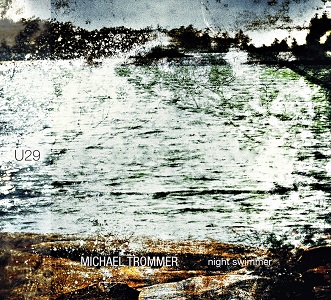 Like photographs, field recordings suggest unaltered reality. Suggests, not captures, because as in photography, there are artists who use field recordings for more than reproducing objective phenomena, if objectivity is even possible in the first place. Whether there’s an answer to that question, it at least points in the direction of impressionism and perspective, not just in visual productions, but in audible ones too. Whatever the medium, the artist brings more than a machine or a technique to the proceedings. Keeping with the comparison to photography, decisions about where to shoot and at what time, about exposure, and about dodging and burning all have parallels in field recording. They’re imprecise parallels, but they are clearly illustrated in the abstract shapes and bruised-blue colors of Michael Trommer’s Night Swimmer.
Like photographs, field recordings suggest unaltered reality. Suggests, not captures, because as in photography, there are artists who use field recordings for more than reproducing objective phenomena, if objectivity is even possible in the first place. Whether there’s an answer to that question, it at least points in the direction of impressionism and perspective, not just in visual productions, but in audible ones too. Whatever the medium, the artist brings more than a machine or a technique to the proceedings. Keeping with the comparison to photography, decisions about where to shoot and at what time, about exposure, and about dodging and burning all have parallels in field recording. They’re imprecise parallels, but they are clearly illustrated in the abstract shapes and bruised-blue colors of Michael Trommer’s Night Swimmer.
On his website, Michael Trommer describes himself as a sound artist focused on "psychogeographical explorations." Both halves of that psychogeographic descriptor are well evidenced on Night Swimmer, but the geographic component is worth sussing out first. Night Swimmer was recorded in 2013 at Southern Georgian Bay in Ontario, Canada, the 5,800 square mile bay of Lake Huron sometimes referred to as the sixth Great Lake. Home of the Anishinaabeg, Wendat, and Tionontati people, it is now also dotted with small Canadian cities and towns, like Lion’s Head, Owen Sound, and Wiarton, and is traversed by both commercial and private ships, including the MS Chi-Cheemaun, which connects the northern portion of Highway 6 with its southern portion. Due to the dramatic combination of exposed granite and tall white pines, and because one of its members owned land there, the Canadian Group of Seven often painted Georgian Bay, and today it attracts tourists interested in its beaches, islands, and pronounced peaks. Though far from isolated, had Trommer desired it, he could have represented the area in its state as a national park, not untouched by humans, but sometimes relieved of them.
Instead he opens the record with children playing in the water. One of them asks, "What am I going to do? Drift to shore?" To which another responds, with some excitement at the suggestion, "No, you’ll drift out to sea." Trommer continues to focus on the children for awhile. Other sounds both sharp and vague float by: the lapping of water against a boat, paper shuffling, Trommer’s breathing. Beneath these a deep, almost seismic tone rumbles, like the sound of music heard through a wall. Insects fade into the mix, then voices that seem to be artificially warped or time stretched, and then there’s a sudden electrical buzz, like a quick cut to a sizzling transformer, and the children disappear. All that’s left are the insects and that muddy, indistinct tone.
It resurfaces later on the same track as a pulsing bass figure and then again on "Night Swimmer 2D," where it becomes more or less obvious that Trommer is dunking his microphone into the bay. The resulting whir and thrum is both a kind of literal representation and a blurred image of the sounds above and below the surface of the water. It also brings an ominous mood to the music, especially as it is included in close proximity to electrical signals and sudden cuts for which there is little or no context. The lack of human sounds in the latter part of "Night Swimmer" further amplifies the stillness and enigma of the composition, and therefore of the surrounding area, and the deep, seemingly synthetic rhythms at the song’s conclusion serve as keen reminders of the breadth of the region. Where the expanse can’t be captured literally, Trommer recreates it poetically.
"Night Paddler" dives further into that stillness. The boats and voices discernible early on in the piece eventually recede into a cavernous space dominated by the echoing call of a solitary bird, a sound as beautiful and as lonely as any melodic figure you can name. After a short time, Michael inserts the sound of a popping flask lid. Water (or Canadian whiskey) can be heard rushing down his throat. There is no crackling fire, no indication whatsoever that this was all recorded at night, but it can be felt. The small sound of crickets, the odd rush of wind, the long, uninterrupted bird calls, they all scream blue and purple and silver light on black sky.
Trommer tips his hand at the end with "Night Swimmer 2D," a kind of pronounced re-imagining of everything before it, shot through with more noticeable post-production, loops, jump cuts, and denser sound fields. It casts some light on the techniques used throughout the album and it emphasizes the psychological half of Michael’s psychogeographic pursuit. Unable to see or hear or smell the places where these recordings take place, everything is transferred to an inner cinematic eye, which fills in the blanks and brings the personal to the purported solid ground of reality.
samples:
 
Read More
- Administrator
- Albums and Singles
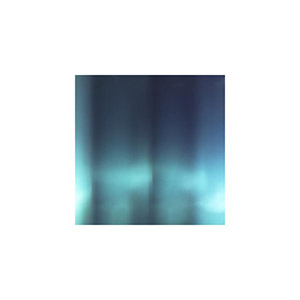 Quietly released between two major Mamiffer releases: last year's Crater with Daniel Menche and the upcoming The World Unseen, this limited cassette solo release from Faith Coloccia, under the name of M√°ra hopefully will not get lost in the shuffle. Surfacing is a sparse, intimate tape that showcases some of her contributions to the more dramatic Mamiffer sound and deserves just as many accolades as her better known "primary" project.
Quietly released between two major Mamiffer releases: last year's Crater with Daniel Menche and the upcoming The World Unseen, this limited cassette solo release from Faith Coloccia, under the name of M√°ra hopefully will not get lost in the shuffle. Surfacing is a sparse, intimate tape that showcases some of her contributions to the more dramatic Mamiffer sound and deserves just as many accolades as her better known "primary" project.
Clocking in at around 18 minutes, Surfacing is a short collection of seven songs, most of which focus on Coloccia's voice and piano, with a tasteful amount of electronics and processing scattered throughout.These elements often appear on Mamiffer records, but here, isolated, their impact is even more significant.Recorded to a four track and a hand-held tape recorder, she strips her music down to the barest of essentials, which stand beautifully in their simplicity.
The opening "The Gift of Life" and closing "Healing for the Wounded" have Coloccia working from a similar melodic theme, and while the arrangements are intentionally sparse, the details shine through in the unassuming austerity.Both pieces feature her vocals layered in such a way that juxtaposes delicateness and power, and the former’s ambient ending is brilliantly continued in the latter’s introductory moments.
Her ethereal voice acts as the centerpiece of "Saint'Elia a Piansi," multitracked wonderfully and accompanied by a simple piano passage, woven together into a song that seems all too short.Both "Nothing of Everything" and "Love and Infinity" have melodies that are a bit on the lower register end of the piano, and coupled with Coloccia's reverberated vocals there is a more spectral feel to them, the latter especially punctuating her lighter vocals with some more bass heavy piano notes.
The two more electronic tinged pieces have a distinctly different feel to them, but still one that resonates with Coloccia's singular sound."Warmth, Shelter, Oblivion" features her vocals up front and clear over a swirling, lush arrangement of processed tones and echoing voice, weaving a dark and bleak tale."Flask of Hermes" is for the most part an instrumental piece that stands out as the most oddly dissonant on an otherwise gentle release.Low fidelity recorded piano and an incidental radio broadcast are mixed together in a noise-tinged haze that, while by far the least beautiful moment on the tape, still results in a brilliantly strange centerpiece and excels with its unexpectedness.
I have always been a big fan of Faith Coloccia's untreated vocals and piano work that have been scattered throughout her projects for years, so being able to hear them standing here on their own, recorded with an intimate closeness that brings out the strong and soft timbres of her voice perfectly.The songs never feel incomplete throughout, but the overall brevity of Surfacing is its only shortcoming.
samples:
 
Read More
- Administrator
- Albums and Singles
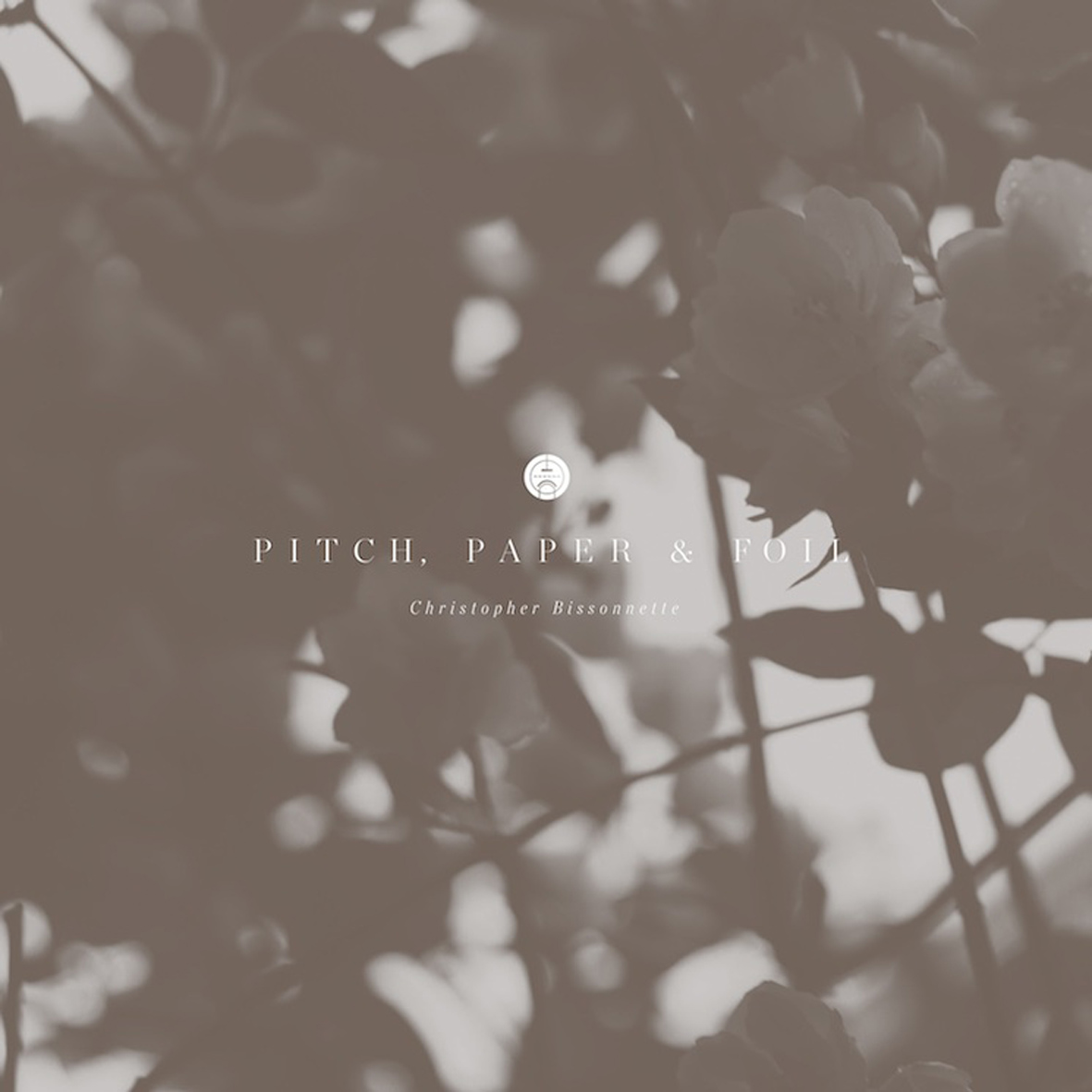 It occurred to me today that modular synthesizer albums are a lot like rodeos: it is immediately clear which cowboys are bad at riding broncos and which ones are good, but it is very rare for any of their individual personalities to come through while they are trying not to get bucked.  Despite only recently taking the plunge into modular synthesizer-centric composition with 2014’s Essays in Idleness, Bissonnette is one of the few artists able to transcend the limitations of that analogy.  While Pitch, Paper & Foil is not necessarily one of the best Christopher Bissonnette albums, it does boast a few of his best pieces and there is no question that this is a fruitful direction.  More importantly, Pitch still sounds unmistakably like Christopher Bissonnette, proving that the entropy of electronics is no match for Bissonnette's rigorous focus and control.
It occurred to me today that modular synthesizer albums are a lot like rodeos: it is immediately clear which cowboys are bad at riding broncos and which ones are good, but it is very rare for any of their individual personalities to come through while they are trying not to get bucked.  Despite only recently taking the plunge into modular synthesizer-centric composition with 2014’s Essays in Idleness, Bissonnette is one of the few artists able to transcend the limitations of that analogy.  While Pitch, Paper & Foil is not necessarily one of the best Christopher Bissonnette albums, it does boast a few of his best pieces and there is no question that this is a fruitful direction.  More importantly, Pitch still sounds unmistakably like Christopher Bissonnette, proving that the entropy of electronics is no match for Bissonnette's rigorous focus and control.
It is almost tragic that the opening "Epoch" is such an amazing piece, as it instantly raises expectations that the rest of the album cannot possibly match.  Of course, the trade-off is that I immediately wanted to hear the rest of the album in hopes of proving myself wrong.  In any case, "Epoch" is essentially the logical culmination of Bissonnette's career to date.  He was already an excellent composer and that has not changed.  Now, however, he has taken the lush and dreamlike ambient drone of his early work and used his self-built synthesizer to focus on making the textures and details as rich and vibrant as possible.  In "Epoch," Christopher forms a wonderfully buzzing and oscillating bed of dense drones, while the foreground is a beguiling haze of undulating shimmer and hiss; muted twinkling; and powerfully sizzling, crackling, and sputtering surges.  The balance between structure and unpredictability is perfect, as the piece feels like a massive mysterious presence slowly surfacing in a lovely, sun-dappled lake.  Happily, "Epoch" is not entirely a fluke either, as "The Rate of Delay" scales similar heights much later on the album, albeit in much more subdued fashion, allowing its warm, wobbly thrum and gently breaking analog electronic waves to just drift and ripple along in a beautifully languorous simmer.
The remainder of the album, however, is considerably less engaging, as Bissonnette is a bit less ambitious in his vision.  Speaking charitably, I might say that Pitch, Paper, and Foil is "varied," but it is hard not to be disappointed by a pleasant interlude of amiably twinkling and bubbling analog electronics when I have already experienced a dazzling, immersive, and fully realized soundworld.  For the most part, the other six pieces are basically the audio equivalent of a calm bay or an overgrown field on a breezy day: the scene is quite static in a larger sense, but there is a lot of soothing swaying and rippling happening on a smaller scale.  The execution remains impeccable, of course, but it is simply too gentle and fragile to leave much of an impression on me.
Of course, some pieces are still better than others.  "Keeping Guard," for example, maintains a strong sense of forward motion, an appealingly unpredictable pattern of deep bloops and trebly twinkling, and an escalating undercurrent with some muscle.  I also quite liked "Shuttering Slides," as its otherwise lazy reverie is beautifully embellished by a host of stuttering, fluttering, and undulating textures.  Unfortunately, other pieces like "Surcease," "Dualism," and "Textbooks of the Elite" are basically pastoral squiggles, twinkles, or drones that never fully manage to transcend early New Age territory ("Dualism" and "Surcease" would seem perfectly at home on I Am The Center).  Bissonnette departs from that benignly radiant template a little by leaving in scratches and hiss, but the grittier events on the periphery do nothing to add heft to the main themes.
I suspect that I would have liked Pitch, Paper & Foil a lot more if it had come out five years ago, which is unfortunate.  Or maybe it is wonderful (for me, anyway), as my tastes are considerably more sophisticated and discriminating now.  In any case, I am far too deadened by the constant onslaught of new modular synthesizer albums to enjoy anything that is merely pleasant and well-executed now.  Most of this album falls quite unambiguously into that category, making it a bit of a mixed-bag for me.  However, the good news is that both "Epoch" and "The Rate of Delay" managed to surpass my increasingly unreasonable and unfair standards for this type of fare.  In fact, they are easily two of my favorite Christopher Bissonnette pieces to date, so this recent synth-centric phase of Bissonnette’s career is a looking a lot like a fitfully triumphant creative renaissance.  As such, Pitch continues a very promising evolution, but the culmination of that evolution is not quite here yet.
 
Read More
- Administrator
- Albums and Singles
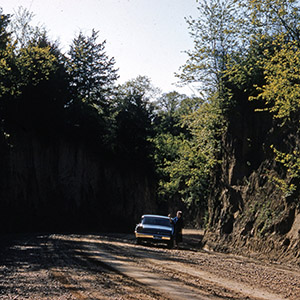 In many ways, these two recent albums (one physical, one digital only) are the quintessential works from Will Long’s Celer guise. Both Akagi and Soryu are expansive, lengthy single piece works that at times are so hushed and delicate to almost be imperceptible, yet they remain compelling and beautiful from beginning to end.
In many ways, these two recent albums (one physical, one digital only) are the quintessential works from Will Long’s Celer guise. Both Akagi and Soryu are expansive, lengthy single piece works that at times are so hushed and delicate to almost be imperceptible, yet they remain compelling and beautiful from beginning to end.
Akagi especially seems to have been composed specifically in a way that tends to drift in and out of consciousness..The work was originally created to accompany a live yoga event in Japan, requiring music that would not just be understated and unobtrusive, but that could convey a meditative quality to it as well.The piece was based around two tape loops of synthesizers, with similar, yet at times contrasting structures that result in peaks and valleys of volume and intensity.
Akagi was obviously composed with the CD format in mind since it clocks in at mere seconds shy of 80 minutes, the accepted maximum for a disc.Additionally, it has such a quiet dynamic to it that the imperfections in most analog media would overshadow the music.The early portion of the piece is especially quiet, requiring attention to hear the most subtle of sounds that Long utilizes.When the music is the most prominent, it retains the distinctly Celer sound of haunting, but not sinister spirits captured in audio form.
When Long pulls the volume back, the result is an odd, delicate sound that is positively shimmering, a fragile sound that is so delicate it sounds as if it could break at any time.Eventually he blends in some dense, heavier yet still warm low-end passages that make for a more commanding sound, but one that never becomes too strong or overwhelming.The somewhat more forceful, attention-grabbing moments balance those relaxed, calm passages extremely effectively, so that even a work which is designed to sometimes fade into the background cannot fully be ignored.
samples:

Soryu in some ways feels like a demo or an early attempt at the strategies employed in Akagi.It has a similar structure, being a single, 63 minute piece that strays way from the drone heavy reputation that much of Celer’s work previously was based on.Instead of repetition it is vast expanses of tone and melody.Long again takes the piece from more commanding to near silent moments, like sunlight passing through the clouds, but it comparably has less focus.It is by no means a bad album, but in comparison to Akagi it lacks that delicate touch and conceptual strength.
Both Akagi and Soryu do act as a subtle variation on Long’s prolific work as Celer in that they are less pure drone oriented and have structures more akin to classical ambient work.While he works with a similar palette of lengthy, hushed tones and textural expanses, the pieces are less about repetition and more of a sense of vast structure and delicate composition.The quiet dynamics, especially on Akagi is at times so peaceful it could potentially lull me to sleep, but due to it achieving the goal he intended more than any sort of dullness.
samples:
 
Read More
- Administrator
- Albums and Singles
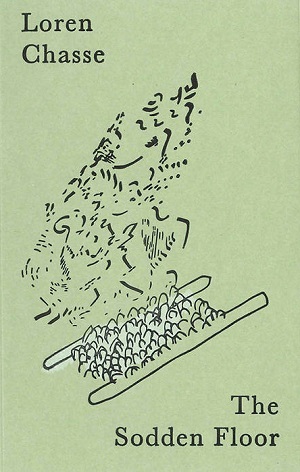 Presence and absence is a musically black and white affair. Either an instrument is present or it isn’t. A sound is buried in the mix or it’s up front and unavoidable. A recording can be clear or murky, not both, and though there are degrees of difference, those degrees exist exclusively on the presence side of the scale. The Sodden Floor, released last year by Loren Chasse in an edition of 100 cassettes, introduces shades of grey to that dichotomy. Over four songs, Chasse combines vaporous field recordings—of pipes, running water, stones, and humming glass—with abstract and sometimes eerie instrumental performances, on bells, drums, guitar, and melodeon. The low-key, atmospheric result is like listening to someone else’s dream. There’s heat and texture to the sights and sounds, but they are implied more than felt, veiled and kept out of reach behind layers of steam and oxidized memories.
Presence and absence is a musically black and white affair. Either an instrument is present or it isn’t. A sound is buried in the mix or it’s up front and unavoidable. A recording can be clear or murky, not both, and though there are degrees of difference, those degrees exist exclusively on the presence side of the scale. The Sodden Floor, released last year by Loren Chasse in an edition of 100 cassettes, introduces shades of grey to that dichotomy. Over four songs, Chasse combines vaporous field recordings—of pipes, running water, stones, and humming glass—with abstract and sometimes eerie instrumental performances, on bells, drums, guitar, and melodeon. The low-key, atmospheric result is like listening to someone else’s dream. There’s heat and texture to the sights and sounds, but they are implied more than felt, veiled and kept out of reach behind layers of steam and oxidized memories.
Memory is a good place to begin with The Sodden Floor. It was recorded in Portland, Oregon between 2011 and 2014, but the now sold out cassette (still available in digital format) wasn’t released until October of 2015, which means there was considerable distance between at least some of the recordings and the arrangement of the material. Furthermore, despite using multiple instruments, Chasse lists only his great grandmother’s melodeon in the liner notes, an instrument built in 1867 by, appropriately enough, Horace Waters & Co. Before the music begins, history, memory, and family are already a part of the proceedings.
Set the tape to spinning and those topics are all magnified, or diminished depending on how you look at it. Except for a few passages of melody played on a guitar and what might be a cello, everything Chasse presents, he presents from a distance. Sounds are pale or faded, soaked in a remote pallor that insinuates temperature and texture without actually transmitting either. It’s a music haunted by sounds and the things that made them, by wind and breath and slow movements through spaces lined with dirt and plant life. Bells, which Chasse utilizes prominently in a couple of sections, don’t simply resonate against a dead background, they ring out in a place that seems like it should smell of stone and wet earth. Solitary notes on the guitar drift by like clouds and the meandrous melodeon phrases bubble up and down as if carried by a stream. Just as they are about to solidify, just as it appears they are within arm’s reach, the momentum of the music—and the momentum of those strange environmental noises—carries them away and they recede into the fog.
Also included in the liners is a brief uncredited poem written like an ode to watery decay. The concluding couplet reads, "Cut all ropes to the shore/Leave me be upon this sodden floor." If Chasse envisioned The Sodden Floor as a final drifting out to sea, he halfway achieved it. Halfway because semblances of the shore are still in evidence. Some of the beauty and melancholy of the recording subsists in its transitory character and in the feeling that none of the events and objects captured on the tape can be recovered. They are as absent as they are present, part physical phenomenon and part phantom.
There is, however, room for endurance. The music is capable of seeping into the air and into our skin, and like family and friends, can persist through all manners of change. They survive as ghosts, present and absent in what we see and hear. But it may be that ghosts are just as real as that stone or that drum or that old melodeon, built by Horace Waters & Co. in 1867.
samples:
 
Read More
- Administrator
- Albums and Singles
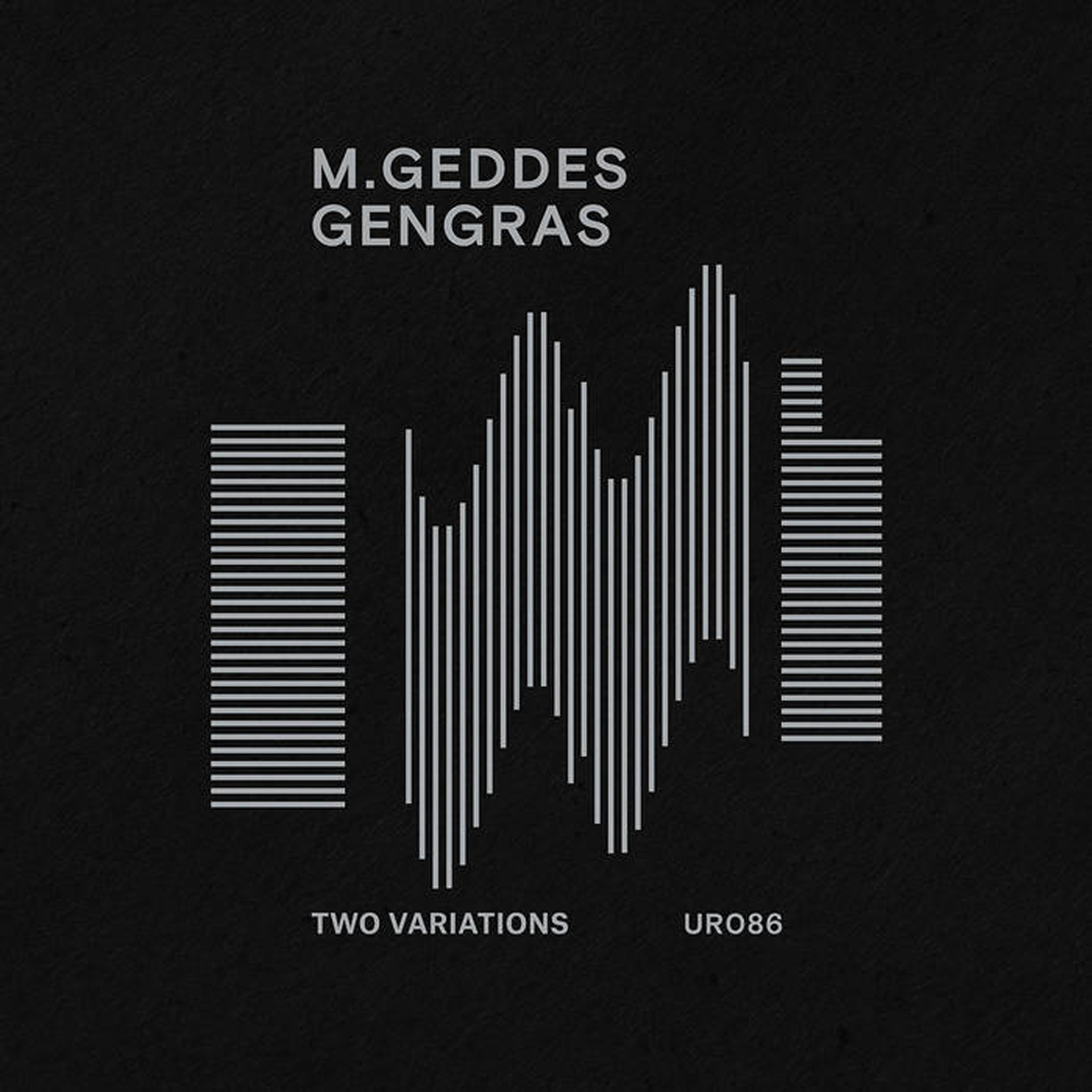 This latest release from LA's resident modular synth wizard continues Gengras's tradition of endless reinvention coupled with no small degree of tech-obsession.  Two Variations documents what are essentially three(!) variations of an elaborate and complex new patch that Gengras self-described as "two pairs of marimba mallets attached to a pair of dice."  While that might adequately summarize both the process and the degree of randomness involved, Two Variations still basically sounds exactly like a modular synthesizer album, albeit quite an inspired one, as these two extended pieces lie somewhere between sublime analog burbling and the antics of an especially unpredictable woodpecker.  Unfortunately, while the material is some of the strongest that Gengras has recorded in a while, Two Variations still feels more like a promising series of raw experiments than a definitive, perfected work in this new vein.
This latest release from LA's resident modular synth wizard continues Gengras's tradition of endless reinvention coupled with no small degree of tech-obsession.  Two Variations documents what are essentially three(!) variations of an elaborate and complex new patch that Gengras self-described as "two pairs of marimba mallets attached to a pair of dice."  While that might adequately summarize both the process and the degree of randomness involved, Two Variations still basically sounds exactly like a modular synthesizer album, albeit quite an inspired one, as these two extended pieces lie somewhere between sublime analog burbling and the antics of an especially unpredictable woodpecker.  Unfortunately, while the material is some of the strongest that Gengras has recorded in a while, Two Variations still feels more like a promising series of raw experiments than a definitive, perfected work in this new vein.
It is worth noting that, aside from the "marimba" comment, Gengras's own description of Two Variations involves an amusingly technical run-down of his set-up that will likely make little sense at all to anyone who is not already neck-deep in the world of modular synthesizers (the number of clock pulses it takes for a note to advance is modulated by random voltage from a Make Noise Wogglebug, for example).  On one hand, that is neat bit of information to provide, as fellow modular synth enthusiasts will no doubt be wondering how the hell these pieces were produced.  On the other hand, it goes a long way towards explaining why this release exists in its current format: Gengras himself used the word "obsessed" to describe his thoughts on this new patch and Two Variations is best understood as the audio notebook of a restless engineer constantly inventing new problems to dive into.  While it definitely sounds like music (often very good music, in fact), the content of this release does not feel like the work of a composer honing an idea to perfection.  Rather, it feels like Gengras made his conceptualized patch a reality, got immediately bored, and decided to see how he could warp it further.  Then he got bored again and decided to see how he could warp that further.  Each new stage gets further and further away from the original patch's melodic hooks, with a definite emphasis on getting more unusual rather than on getting stronger or more listenable.
Another factor that plays a large role in the shaping of Two Variations is its format: while available digitally, it was released in physical form as a 68-minute cassette.  That, of course, means that each "variation" needed to be roughly the same length.  It also means that the length was dictated by the longest (and most recent) piece, "04.10.15," a soundboard recording of a live performance.  As a result, the first variation ("03.06.15") is actually two earlier run-throughs of the patch mashed together into a single lengthy piece.  That is somewhat frustrating, as the first run-through is both the shortest and arguably the best of the lot.  While not quite as texturally and rhythmically adventurous as what follows, the first nine minutes of "03.06.15" are a beautifully intricate lattice of plinking and twinkling minor key arpeggios over a warm bass note progression.  Everything is both crystal-clear and appealingly melodic.
All of that goes away in the much longer second half of the piece, which transforms into something a bit more woozy and submerged-sounding.  It is not bad, but it is almost three times as long as its superior predecessor, which is far too long for a piece that does little more than amiably burble and bubble along.  The patch naturally undergoes yet another radical transformation for the impressively bizarre and epic "04.10.15," which mostly eschews melody in favor of something resembling a stuttering, randomized marimba performance in a large, reverberation-friendly space.  Unlike "03.06.15," however, there is some genuine and significant transformation, as a couple of other patches turn up to fleetingly morph the piece into something resembling a dense, slowed-down, and wildly chromatic organ solo followed by a foray into roiling Kosmische psychedelia.
All of that basically adds up to a mixed bag of an album, which I suppose is perfectly fine if cassette releases are viewed as a place to document experiments and test fresh ideas between more formal albums.  Viewed in that light, Two Variations' flaws are mostly inherent ones, both for the format and for the instrumentation: aside from the too-brief opening piece, everything about Two Variations feels naggingly overlong and underedited.  Also, as is generally the case with "live" modular synthesizer performances, each piece is essentially the same idea being endlessly tweaked until Gengras decides that it has gone on long enough.  Granted, "04.10.15" actually contains several different patches, but they always feel like an unrelated interlude being dropped into the middle of a piece rather than a satisfying compositional evolution.  Given those fundamental restraints and the caveat that this is no doubt intended for a rather niche audience, however, Two Variations actually has quite a lot going for it.  While I still miss the lush beauty of Gengras's Moog years, this is an admirably wild and adventurous departure from the more New Age-influenced Ishi and an appealingly deep and longform expansion upon the promise of New Process Music.  In short, there is some legitimately inspired material here, but this is not yet the ideal presentation for it.  Hopefully, that will come later and Gengras's next album will distill these ideas to perfection...unless an even newer process seizes his imagination before he has a chance to get to it, which is (of course) a very legitimate danger.
 
Read More
- Administrator
- Albums and Singles

Tim Hecker has revealed details of his latest album, and first record for 4AD. The Canadian composer will release Love Streams, on 8th April 2016.
Love Streams takes its cues from the avant-classical orchestration and extreme electronic processing of his previous full-length, 2013’s Virgins, but shaped into more melancholic, ultraviolet hues. Inspired by notions of 15th century choral scores (particularly those by Josquin des Prez), transposed to an artificial intelligence-era language of digital resonance and bright synths, the album was assembled gradually, with layers of studio-tracked keyboards, choir and woodwinds being woven into the mix, then molded and disfigured through complex programming. Like hearing some ancient strain of sacred music corrupted by encryption, Hecker admits to thinking about ideas like "liturgical aesthestics after Yeezus" and the "transcendental voice in the age of auto-tune," during its creation.
The Love Streams sessions took place throughout 2014 and 2015 at Greenhouse Studios in Reykjavik, Iceland – where parts of both Virgins and Ravedeath, 1972 were tracked – with Hecker reuniting with the same crew of collaborators from Virgins (Kara-Lis Coverdale, Grímur Helgason) and bolstered by the Icelandic Choir Ensemble, whose vocal arrangements were scored by Icelandic composer Johann Johannsson.
The title of Hecker's new work can be interpreted any number of ways – erotic, technological, spiritual – although his own conception is appropriately vast, calling it "a riff on the ubiquity and nihilism of streaming of all forms of life." Now we stream more than we love. Nowadays music too frequently resembles a product, or white noise. With a career spanning fifteen years, Tim Hecker belongs to a select camp actively resisting this undertow, this reduction in significance.
Read More
- Administrator
- Albums and Singles

This is the seventh Surgeon album.
"While exploring new production techniques using old and unlikely hardware, the results were so unusual that I really had the sense that these pieces of equipment didn't actually create these sounds, rather they were in fact some kind of elaborate reception device that allowed me to tune into transmissions from distant galaxies. The music I could hear was actually the received transmissions of Pop Hits from those Distant Galaxies that were being played on their radio stations. I quickly recorded all that I could before losing the transmission. I consulted with Dr. Andrew Read, the astrophysicist with whom I recorded Guitar Treatments in 1999. He has worked on the discovery of the most distant galaxies and astronomical objects in the Universe. Together we came up with a possible list of where these musical transmissions may have come from."
-via Forced Exposure
Read More
- Administrator
- Albums and Singles
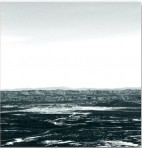
"The legendary JK Broderick reprises his lushly romantic Final alias for Downwards with an expanded reissue of 2010's My Body is a Dying Machine offered to those who missed it first time around.
Now featuring eight tracks instead of the original five, Black Dollars hits a rich vein of ambient dream-pop that has always been an integral, if quieter part of Broderick's oeuvre since even before Godflesh was born.
Foggy highlights of the original EP such as the looping, blooming noise ecstasy of Gravity and the mind-sweeping guitar strokes of A Slight Return are now supplemented with the blown-out glory of The Eternal Dreamer and the majestic MBV-style swell of Flow River Flow and the vaulted electro-acoustics of The World is Not Waiting For You to make up an epic trip for the road or bedroom."
-via Boomkat
Read More
- Administrator
- Albums and Singles

"Roly Porter zooms out to super macro levels of sidereal physics in Third Law, his debut for Tri Angle and most impressive solo album to date in the wake of Life Cycle of a Massive Star and his formative work with Vex’d.
Eight tracks describes a cataclysmic chain of cosmic events with fathomless attention to detail and a dizzying sense of meter appropriate to the breadth of his compositional and conceptual scope.
Leaving the dancefloor/earth as a speck of dust floating in his rear-view, he evacuates mind/body into a noumenal dimension of near-symphonic energy transfers between interrelated elements of rhythm, bass, and sound design shaped according to his own laws of physics.
In effect it recalls the flaring cinematic scope of Vangelis as much as Iancu Dumitrescu’s pursuit of a spectral music, and likewise the shuddering electro-acoustic masses of his Subtext label-mates, Emptyset and Paul Jebanasam, whilst also paralleling the dark matter investigations of The Haxan Cloak and Fis’s polymetric, psycho-acoustic ecosystems for Tri Angle."
-via Boomkat
Read More

